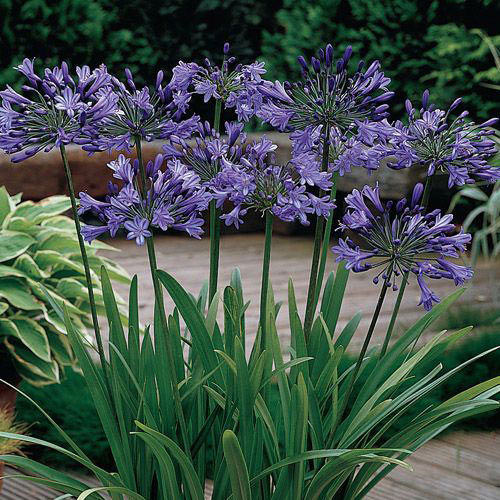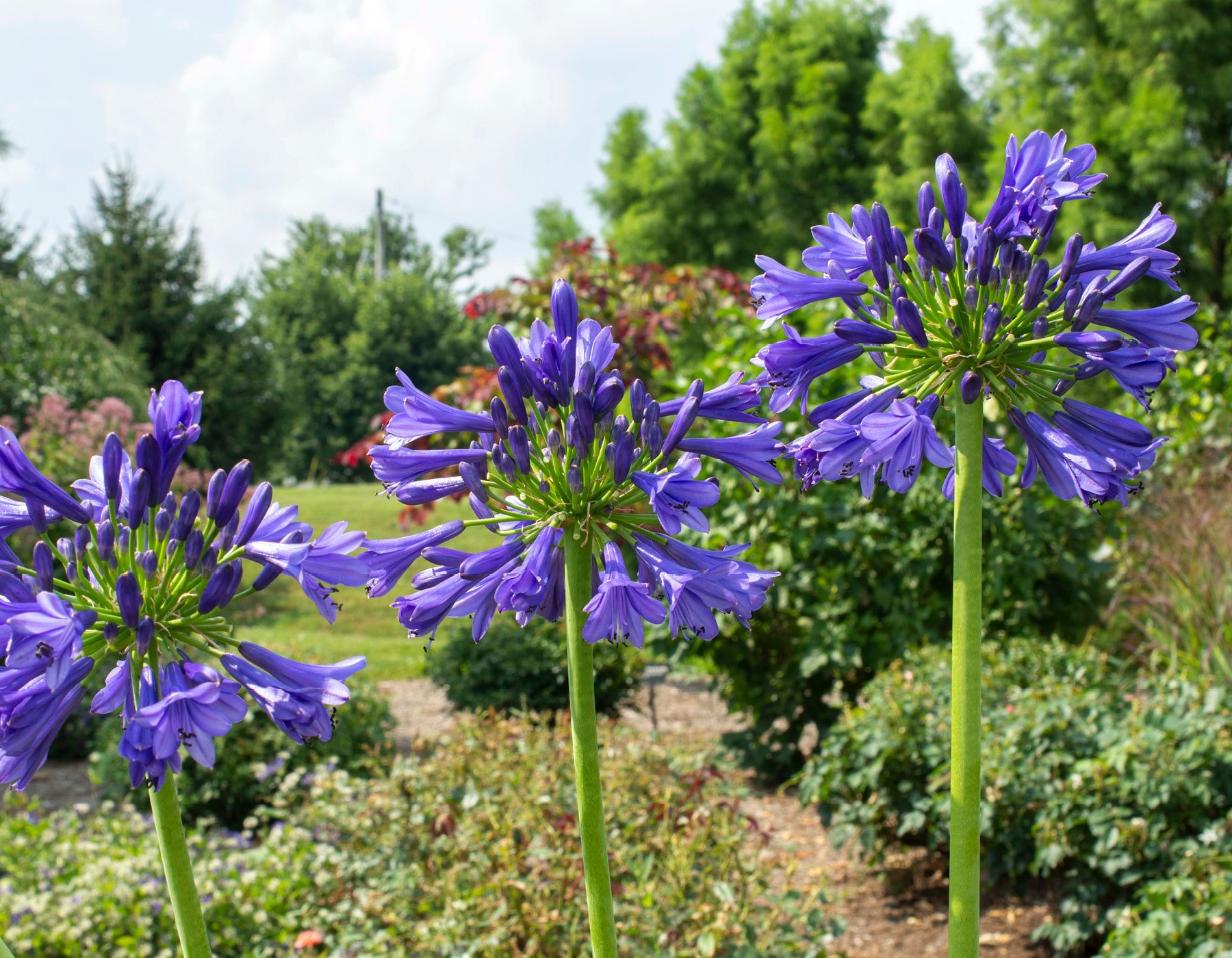Expanding Agapanthus: A Complete Overview to Beautiful Blooms
Expanding Agapanthus: A Complete Overview to Beautiful Blooms
Blog Article
Grasping the Art of Agapanthus Care: Necessary Actions for Healthy And Balanced Growth and Vivid Blossoms
In the realm of horticulture, the farming of agapanthus stands as a satisfying endeavor for those who seek to nurture these elegant flowering plants. With their striking flowers and elegant vegetation, agapanthus has caught the focus of garden enthusiasts worldwide. However, achieving ideal growth and dynamic blooms needs a nuanced strategy that incorporates various important actions. From selecting the ideal variety to mastering trimming techniques, the trip in the direction of growing thriving agapanthus plants is diverse and holds the key to unlocking the full potential of these herb gems.

Selecting the Right Agapanthus Range

When picking the ideal Agapanthus range for your garden, consider elements such as environment suitability, blossom color, and development behavior. Furthermore, consider the environment in your area to ensure the Agapanthus range you select can prosper in your particular problems. Understanding the growth habit of various Agapanthus selections is critical for correct placement within your yard.
Suitable Growing Conditions
Taking into consideration the ideal ecological needs is important for effective Agapanthus cultivation. Agapanthus plants are sensitive to chilly temperature levels and need to be protected from frost throughout wintertime months.
To guarantee healthy growth and vibrant flowers, plant Agapanthus light bulbs at a depth of regarding 2-4 inches and area them 8-12 inches apart. Including raw material, such as garden compost, to the dirt can improve water drainage and fertility, promoting robust root growth. Mulching around the base of the plants helps retain dampness and subdues weed development. Normal watering is crucial, especially during the growing period, to maintain the soil constantly damp however not saturated.
Watering and Fertilizing Tips
Maintaining correct dampness levels and giving crucial nutrients are crucial elements in the care regimen for Agapanthus plants. It is essential to strike an equilibrium when it comes to sprinkling Agapanthus. These plants like consistently damp soil yet are prone to root rot if overwatered. During the expanding season, water deeply when a week, making sure the soil is well-draining to stop waterlogging. In hotter climates or during durations of drought, even more constant watering may be essential to keep the dirt equally damp. However, minimize watering in the wintertime to avoid water logged conditions.
Feeding Agapanthus is essential for promoting healthy growth and prolific blooms. Apply a balanced fertilizer, such as a 10-10-10 formula, in the very early springtime as brand-new development arises. By adhering to these watering and feeding ideas, you can guarantee your Agapanthus plants prosper and create vibrant, lasting blossoms.
Pruning Strategies for Agapanthus
Pruning Agapanthus plants at the suitable times and with proper techniques is vital for maintaining their health and advertising ideal growth and flowering. The ideal time to trim Agapanthus is in late winter season or early spring prior to new development emerges.
For flowered stems, wait till the blossoms he has a good point have actually perished and after that cut them back to the base. This not just cleans up the plant's look however also urges the growth of new flower buds. Deadheading spent flowers can likewise redirect the plant's power into producing more blossoms as opposed to establishing seeds. Nonetheless, if you intend to gather seeds for breeding, leave some flowers to dry and fully grown on the plant.
Bear in mind to use tidy, sharp tools to make exact cuts and lower the risk of presenting diseases. Agapanthus. Routine pruning Clicking Here will help maintain your Agapanthus looking cool and healthy and balanced while ensuring an abundant display of beautiful flowers
Taking Care Of Common Bugs and Diseases
After making sure correct trimming strategies for Agapanthus, it is crucial to deal with common bugs and conditions that can impact the health and wellness and vigor of these plants. One usual insect that impacts Agapanthus is the Agapanthus gall midge.
In addition, Agapanthus plants can suffer from origin rot if they are planted in badly draining dirt. By being watchful and taking punctual action versus conditions and pests, you can help your Agapanthus plants thrive and generate lively blossoms. Agapanthus.

Conclusion
Finally, mastering the art of agapanthus care involves choosing the right variety, offering suitable planting problems, correct watering and fertilizing, suitable trimming methods, and addressing usual pests and conditions. By following these necessary actions, check out here you can ensure healthy and balanced development and vibrant flowers for your agapanthus plants. Remember to frequently monitor and keep your plants to promote their general health and long life.
To guarantee healthy and balanced growth and dynamic blooms, plant Agapanthus light bulbs at a depth of regarding 2-4 inches and room them 8-12 inches apart. By following these watering and fertilizing ideas, you can guarantee your Agapanthus plants prosper and create dynamic, durable flowers.
One common parasite that influences Agapanthus is the Agapanthus gall midge. In addition, Agapanthus plants can experience from origin rot if they are planted in badly draining dirt. By adhering to these essential actions, you can guarantee healthy development and vivid flowers for your agapanthus plants.
Report this page